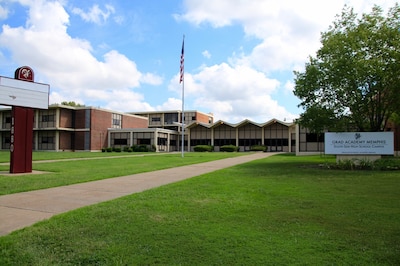After five years of trying to turn around low-performing schools, Tennessee’s state-run schools aren’t performing any better than schools that haven’t received any intervention, according to new research released Tuesday.
But locally controlled low-achieving districts called Innovation Zones have not only improved performance — as shown in other studies — but have sustained those improvements over five years.
That time period is seen as a significant marker because previous research has found it can take up to five years to see improvement from school interventions. Both the state-run district and the local iZones were launched 6 years ago.
Tennessee is seen as a leader in turnaround work around the nation. The state-run district began taking over schools in 2012, saying it would vault 5 percent of the state’s lowest-achieving schools to the top 25 percent within five years. This model, based on the Recovery School District in Louisiana, allowed Tennessee to take control of struggling local schools in Memphis and Nashville, and to partner with charter management organizations to turn them around.
But the district hasn’t produced large academic gains. It’s struggling to attract students, retain high-quality teachers, and to build a climate of collaboration among its schools, which now number 30.
The study compared Tennessee’s state-run district with other low-performing schools statewide and found that average test scores in reading, math, and science “before and after the reform is no different from the difference during the same period for comparison schools.”
“Overall, the ASD schools exhibited similar growth to comparison schools receiving no interventions.”
In a statement, Education Commissioner Candice McQueen said, “We have not seen the success in the ASD that we want, and that is something we’re addressing.”
We “took the lessons we’ve learned from both the ASD and models like the Shelby County iZone, and it’s provided a framework for a more nuanced approach to how we do school improvement in our state,” she said.
Gary Henry, a professor at Vanderbilt University and one of the researchers, said the biggest difference between Tennessee’s state-run district and others like it is that the district is “managed by charter organizations but doesn’t act like charter organizations.”

Unlike the Recovery School District in Louisiana, the Tennessee state-run district is required to serve students within its schools’ neighborhoods, Henry said. The Achievement School District sought to maintain neighborhood-based schools, where attendance is based on who is zoned to that school.
“When charter schools are based on choice, they can control entrance and exit in a way a neighborhood school can’t,” Henry said.
For example, some charters only accept students at the beginning of the school year, he said.
“In the ASD, you don’t have that competition or matching in place that may be the elements most crucial to some positive results we’ve seen in the Recovery School District,” he added.
The research brief is based on data collected from 2012 to 2017 including student and teacher demographics and student test scores from state exams and end-of-course exams.
The study is the latest in a series analyzing the state-run schools and iZones, published by researchers who have followed school turnaround efforts as part of the Tennessee Education Research Alliance, or TERA. The research builds off of previous findings: iZone schools are improving students’ reading, math, and science test scores faster than state-run schools and low-achievement schools receiving no extra support.
Innovation zones are run by several local districts with the help of extra state funding. The model gives schools autonomy over financial, scheduling and staffing decisions, similar to charter schools. While iZones exist in Memphis, Nashville, and Chattanooga, the most notable work has been through Shelby County Schools, now with 24 Memphis schools in its turnaround program
Researchers compared “moderate to large” growth in iZone schools to that of other school intervention models throughout the nation, such as the School Redesign Grants model in Massachusetts and the state takeover in Lawrence Public Schools.
But Henry said that this week’s brief is the first study of its kind nationwide, and that the research comes down strongly in favor of iZone models.
“No studies across the county on turnaround have looked at long-term effects,” Henry said. “Here we see that the positive effects of the iZone are sustained, and therefore the iZone model is an evidence-based practice for school turnaround [nationwide]. If states want to adopt an iZone approach, they have the evidence to support it.”
On the other hand, Henry added, there’s also evidence that the Achievement School District’s original model isn’t producing results.
“The ASD approach of bringing in charter organizations to take over a school is not sufficient on its own to really improve student outcomes,” Henry said. “Other things need to be done in order to improve schools, such as recruiting and retaining teachers and leaders, and reducing chronic absenteeism.”
Seeking to turn its state-run district around, the Tennessee Department of Education recently hired Sharon Griffin, the former leader of the iZone schools in Memphis, to take over as chief of the district.

Griffin started in her new role this month and told Chalkbeat that re-establishing the district’s credibility with the communities it serves is her first goal, as well as fostering collaboration, which she was known for in iZone schools.
The operators of state-run schools have had a steep learning curve amid daunting challenges that include high student mobility, extreme poverty, a lack of shared resources, barriers to school choice, and on-the-ground opposition. But the state department is banking on Griffin’s previous success to turn over a new page for the Achievement School District.
“Our ability to improve the lives of our students, as research suggests, depends on support and the ability of the adults within our schools,” Griffin said. “I’m excited for the ASD to work with local districts like Shelby County Schools to bridge the gaps together, to share best practices and professional development so regardless of where a student attends, we are meeting their needs.”
Griffin added that she’s focusing on how to better support and retain high-performing educators and leaders during her first months on the job.
The research alliance will continue to study the possible factors that may be influencing the impacts of the iZone and state-run district. According to its statement, researchers are planning to explore how much possible barriers to improvement such as teacher turnover, chronic absenteeism or principal turnover, have suppressed more positive effects of Tennessee’s turnaround interventions.
You can reach the research brief in full below:

